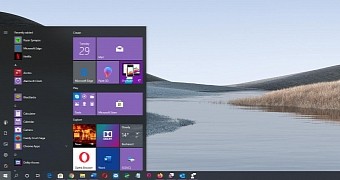There’s a lot going on behind the closed doors at Microsoft, and some of the changes that the company has pledged to recently concern the Windows 10 development cycle.
Right now, Microsoft ships two different feature updates every year, according to the following schedule:
Spring feature update – RTM in March, GA in April or May Fall feature update – RTM in September, GA in October or November
Every release is first tested more or less thoroughly as part of the Windows Insider program, albeit given the company is working on several feature updates at the same time, things have become a little bit confusing for those who are new to the Insider program. Right now, here’s who gets what in the Windows Insider program:
Fast ring – Windows 10 20H1 (spring of 2020) Slow ring – Windows 10 19H2 (November 2019 Update) Release Preview ring – Windows 10 19H2 (November 2019 Update)
Very soon, however, Microsoft is expected to update Insider rings, and I anticipate the following approach:
Skip Ahead – Windows 10 20H2 (fall of 2020) Fast ring – Windows 10 20H1 (spring of 2020) and then Windows 10 20H2 (fall of 2020) Slow ring – Windows 10 20H1 (spring of 2020) Release Preview ring – Windows 10 19H2 (November 2019 Update) for quality update testing
So basically, every time Microsoft finalizes a new Windows 10 feature update, the company spends one or two more months on last-minute polishing before the rollout to production devices officially kicks off.
Beginning with the upcoming Windows 10 20H1, this could all change. Microsoft wants to align the Windows 10 dev cycle with the one of Azure, not only because this makes sense from a release perspective, but also because this would give the company more time to further refine each update. So the aforementioned release calendar changes to this:
Spring feature update – RTM in December Fall feature update – RTM in June
For the time being, it’s still not clear if the release dates change as well, but if they don’t, it’s pretty clear that Microsoft gets a lot more time to prepare a new feature update for the public rollout.
For example, Windows 10 20H1 is projected to be signed-off in December, while the first wave of production devices should get it in April or May.
This means the 20H1 update spends at least four more months getting the finishing touches, and this should help guarantee better stability and reliability once the rollout starts. At the same time, it would allow Microsoft to complete the staged release faster – Microsoft publishes Windows 10 feature updates in waves, as it first needs to determine the likelihood of bugs for specific sets of devices; more time polishing updates would mean a reduce likelihood of bugs, therefore the rollout can complete in a shorter time.
Interestingly, Windows 10 20H1 is believed to have reached feature-complete stage in August, and there’s a chance the same calendar would be used for the next feature updates as well. This means that Microsoft uses the time before feature-complete and RTM exclusively for bug fixes, and once again, this helps with all the things mentioned above.
Going forward, all of these make sense from a reliability perspective, but it remains to be seen what impact this new development cycle would have on the quality of each release. Windows 10 20H1 should help us better understand the direction that Microsoft wants to embrace for Windows 10 in the long term, and we’ll definitely hear more from Microsoft itself as this plan advances in the next months.

 14 DAY TRIAL //
14 DAY TRIAL //